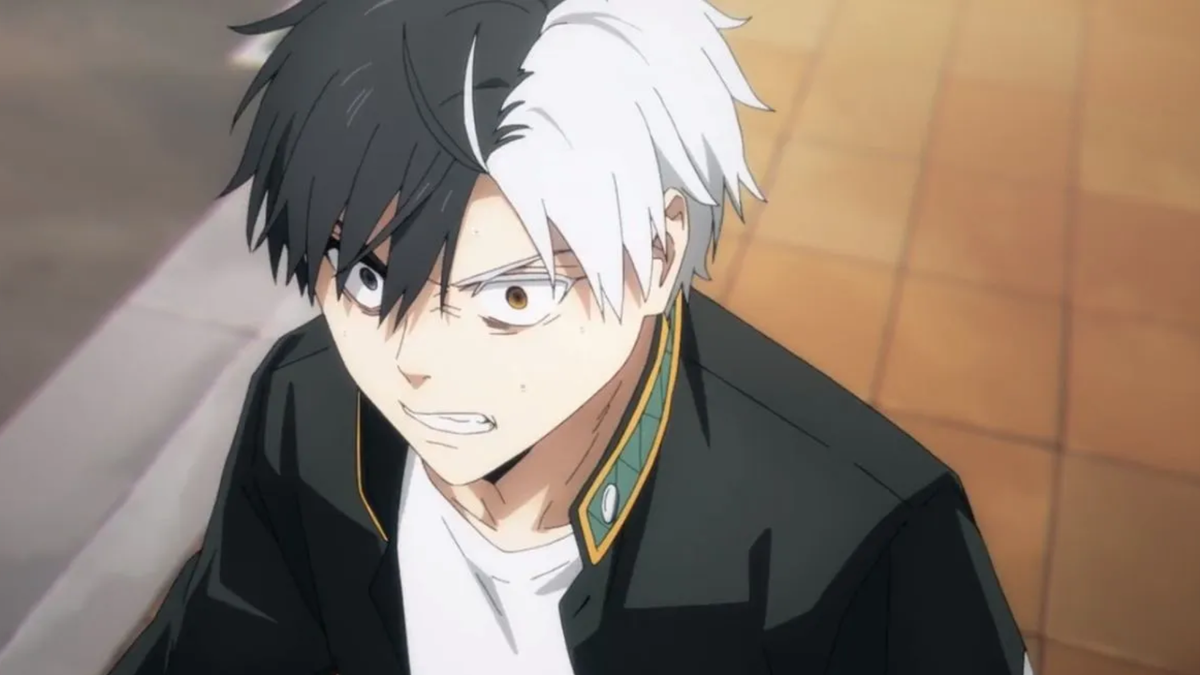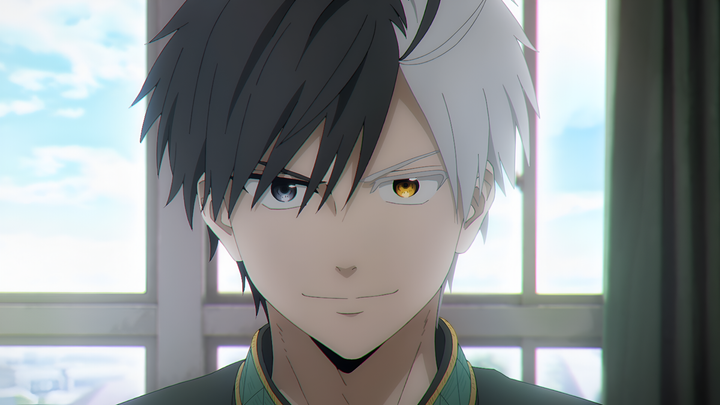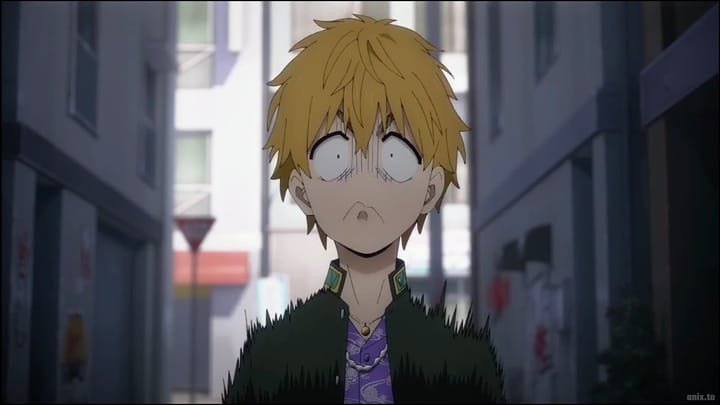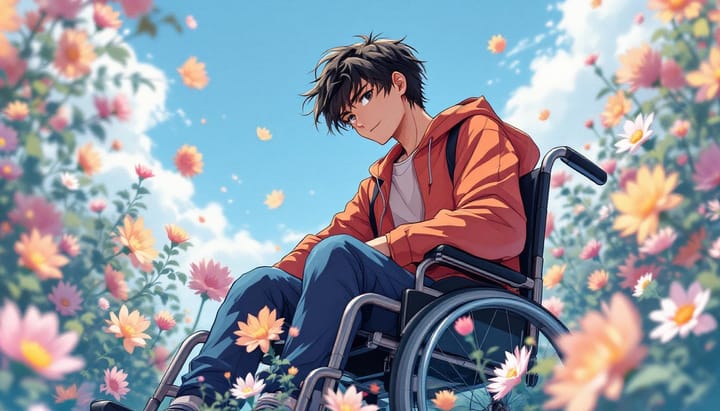4 Painful C-PTSD Symptoms in Wind Breaker Anime
Sakura Haruka’s journey in Wind Breaker reveals four painful C-PTSD symptoms, highlighting the impact of trauma and the resilience needed to overcome it. This article explores how anime brings mental health struggles to light.

Written By: Fuegio Barrios
An anime-lover and a Mental Health Advocate.
Published: September 13, 2024
Last Updated: December 18, 2024

“Thank you…”
Kotoha Tachibana is a 16-year-old. She was just saved by Sakura from a bunch of delinquents. She then treats Sakura to some food.
“This woman… Why is she acting so friendly?”
Sakura Haruka is a boy who is almost hypervigilant about every person in this new town, and questions the woman in front of him.
TRIGGER WARNING: This post may contain triggering words. Please read with caution. If you are feeling uneasy, you may choose to stop reading this post.
SPOILER ALERT: This post includes some spoilers from the anime Wind Breaker.
Introduction
Every single person in this town was weird to Sakura Haruka. They were all acting friendly towards him. Maybe even too friendly.
He felt something was wrong even though he just saved Kotoha Tachibana.
He continues to question this kind of treatment.
But little did he know that what was “wrong” was within him and the people in his past, which resulted in trauma.
In this article, we will be focusing on and exploring Sakura Haruka's trauma and trauma responses which leads us to believe he has Mental Health struggles like having symptoms of C-PTSD.

What is C-PTSD?
According to Matthew Tull, PhD from VeryWellMind, Complex-Post Traumatic Stress Disorder or C-PTSD is a mental health disorder caused by long-term (chronic) trauma.
The trauma can range from different traumatic situations, such as prolonged child abuse, or domestic violence, and more.
In Sakura’s case, this was a form of child abuse, mostly noted as emotional and verbal abuse as shown in the anime, and possibly even bullying. The abuse and bullying happened almost all the time in his old town.
The Difference between C-PTSD and PTSD
PTSD, on the other hand, was known by experts to have been caused by a single or short-term traumatic event such as a vehicle accident or natural disaster.
However, later on, C-PTSD was more known to have additional symptoms of PTSD symptoms.
For example, C-PTSD symptoms, aside from having symptoms of behavioral and psychological stress responses, also had additional symptoms like having difficulty with emotional regulation, identity and sense of self, and forming relationships.
4 Painful C-PTSD Symptoms
Here are 4 Painful C-PTSD Symptoms in the Wind Breaker Anime.

Symptom 1: Having a Negative Sense of Self
Sakura Haruka Wants to be the Best
Sakura always felt like he was good at physical fights. He moved to the new town to join the school of great fighters called “Furin High.”
According to him, Furin High has the best fighters. They may have the lowest grades but the greatest fighting abilities.
Sakura wanted to be the top dog in Furin High.

Sakura's Self-Worth
But delving as to why, it’s because he wanted to feel something… He wanted to feel strong. He wanted to feel worthy.
He wanted to be worth it.
Because of how he was treated in his old town, facing all the trauma and bullying, he felt like he was worth nothing, and that people just hated him, and didn’t trust him, all because of his looks.
This is why he turned to physical fights. He felt like he was good at something, therefore, feeling worth. This was his coping mechanism and outlet for all the trauma he’s experienced.
Value From External Things
But remember, it’s important to note that external things do not and should not equate to your value. True value comes from within.
Later on in the series, Sakura realizes this when he meets the current top dog of Furin High, Umemiya Hajime (my favorite character, by the way!)


Symptom 2: Being extremely reactive to negative emotional stimuli
“Wanna have a go?!” the tough fighter Sakura exclaims as if he needed to have another physical fight… this time, with Kotoha.
The situation didn’t call for such reactivity, because in the series, this was shown in a joking manner. He was most likely feeling embarrassed and didn’t know how to react to the situation.
Nonetheless, the situation felt stressful to him, which would be considered a negative emotional stimulus.
During the whole series, Sakura has always manifested anger and aggressiveness, even in moments of fun.

Sakura's Core Principle
Aside from reactivity in fun moments, his extreme reactivity is also shown in the fighting itself. When he gets to fight with other people, he has a principle in play:
"Stop believing you’re strong when you’re weak.”
This principle is directed at the people he fights. To him, these fighters have negative traits. They believe that they are strong, so they use their strength for wrong things. Which, for Sakura, makes them weak in reality.
Understanding this principle of his shows that those who have negative traits tend to be negative stimuli for him, thus, making him react with aggressiveness or anger.

Symptom 3: Severe Difficulty in Forming Meaningful Connections with Others
As I’ve mentioned earlier, Sakura felt like the new people were weird or odd because of how they treated him. They treated him very nicely, with love, care, and understanding.
But Sakura was afraid.
He was closed off.

He was hypervigilant and on alert with everyone around him. He always saw everyone as a potential threat to him. Because of this, he had difficulty forming new meaningful connections and relationships with the people in this new town.
But this wasn’t his fault. This was all because of the prolonged trauma he had experienced.

Symptom 4: Frequent Negative Thoughts and Emotions
Based on his experiences in the previous 3 symptoms, Sakura has frequented negative thoughts and emotions. The most common emotions are anger, hurt, fear, and confusion.

Sakura's Emotions After Lion's Head and Bofurin's Clash
His negative thoughts were also present even after the fight between Lion’s Head and Bofurin (Furin High).
He wanted to know why Umemiya could easily accept Choji and Togame.
This may just look like normal confusion, but it was leaning toward the negative side because Sakura seemed a bit angry.
The reason why I say this is because when Choji and Togame apologized to Sakura, Umemiya, and the gang, it was as if Sakura felt like he didn’t want to accept their apology after everything that had happened.
However, this was when Umemiya broke his train of thought. Ume-chan made Sakura decide what should happen to the two.
“Huh?? Why me?!”
Sakura was shocked by what just happened.
The fact that it caught him off guard meant he started feeling negativity and maybe even anger alongside confusion before Umemiya spoke.

Conclusion
In conclusion, these are the 4 Painful C-PTSD Symptoms shown in the anime Wind Breaker, mostly seen in Sakura Haruka.
First, he had a negative sense of self which at first glance looks like he was proud of himself.
Second, He was also extremely reactive to negative stimuli which was shown in his frequent angry bursts.
Third, Sakura also had trouble creating or forming meaningful connections and relationships with the kindhearted people in his new town.
Last, Sakura had frequent negative thoughts and emotions which also resulted in anger and fear.

My New and Favorite Anime This Season
Wind Breaker is one of my new favorite anime of all time and I recommend this anime. It’s not just all action, but you learn all kinds of things from this anime, some about Mental Health, some about Self-improvement, some about friendship and camaraderie, and more!

Like, Comment, and Share!
If you or you know someone who is struggling with C-PTSD or any other mental health issues, it is important to seek help from friends, family, professionals, or any emotional support system. Remember, you are not alone and there is always help available.
If you enjoyed this post or learned a thing or two, feel free to give us a tip by buying us a coffee at: https://ko-fi.com/animezinph
Read another article of ours:

Disclaimer
I am not a mental health professional. I am a mental health advocate who researches mental health and provides information, analyses, guides, and tips/techniques using the platform of anime.
- Fuegio from Animezin PH




